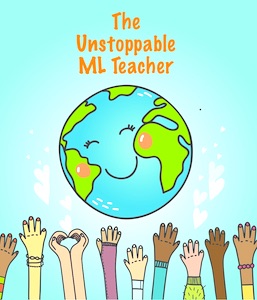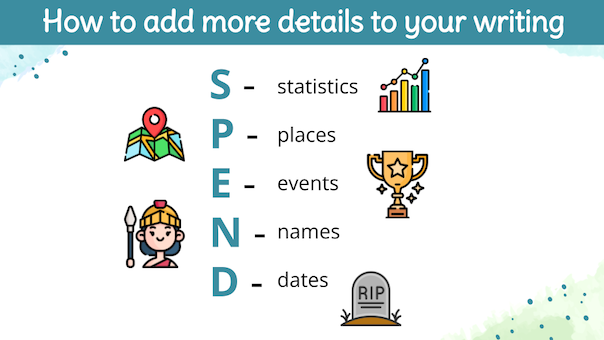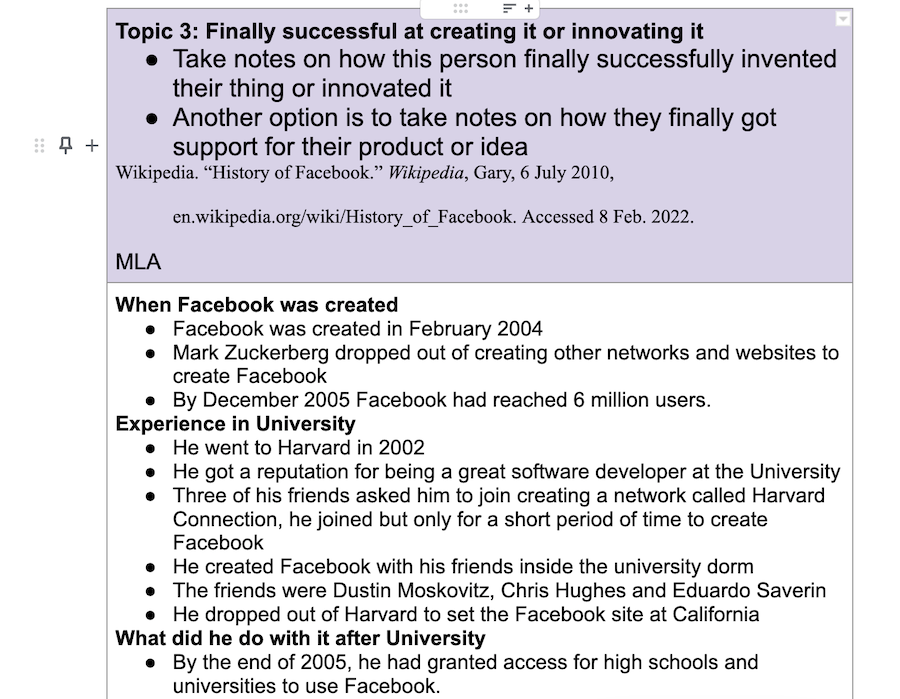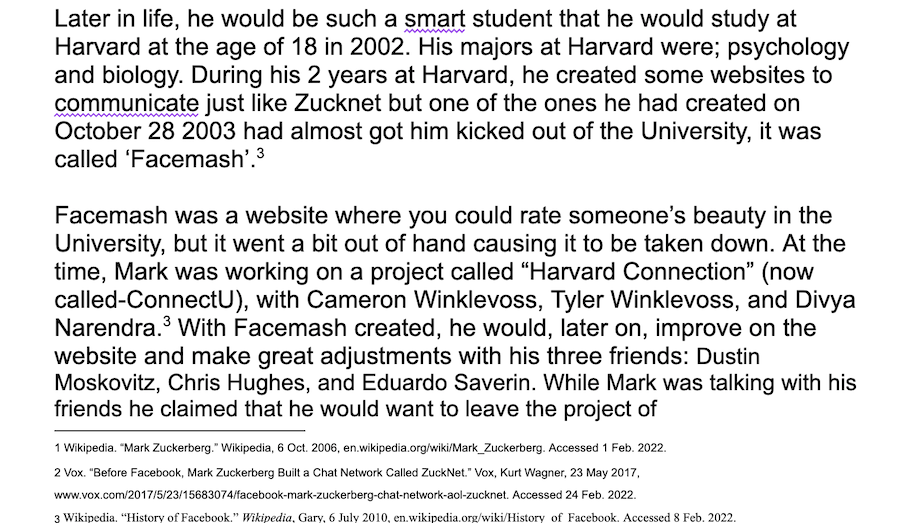Help Students Add Detail to Research and Writing
A MiddleWeb Blog

I have to confess that it has been a mantra of mine for most of my career as a language acquisition and literacy development specialist and (more recently) a social studies teacher. Until this year.
Now I have greater clarity on the details students can provide, especially in history reports, and how best to prompt them.
Taking effective notes
When students were researching their summative history topics, I found that they were not taking effective notes. Within the first few paragraphs of scanning their articles during a conference, I’d already identified key details that students should have written down.
Gradually I realized that many students simply didn’t know which things were most important. They would write notes without specifics. Important names were missing; relevant statistics were left out; key dates and places were ignored.
Through several iterations, I finally arrived at teaching the SPEND mnemonic (statistics, places, events, names, dates) to help them learn what meaningful detail looked like. This acronym highlighted keywords for the most important things students should collect during their research. Once I taught them the SPEND technique, miraculously students’ notes became significantly more thorough.
Writing with more details
Once students were finished researching, I transferred SPEND to their writing. I celebrated their highly detailed notes and shared that many of these notes could now be used in their writing. I asked students to use SPEND to:
- show the magnitude with a statistic
- set the context by providing a place
- retell an important event
- name a key person
- identify a significant date
To my great joy, students’ writing did become much more detailed. Their paragraphs were plump with the most relevant details. For my most competent students, I could see how one sentence was a seed that bloomed into the next. Students’ writing became more connected as each fact linked into another. For example, students wrote about a person (name) doing something (event) in a specific location (place) in a particular year (date).
Kind is clear
Many multilingual students who are acquiring English skills are sometimes tarnished with unfortunate descriptions: unmotivated, not intelligent, not capable, burdened with learning issues.
Instead of finger pointing at students, educators can pause to reflect on our practice. One of the most reflective questions to ask ourselves is
How can I make this clearer?
When we make things more transparent for students – when we purpose and clarity – we are being kinder to them. Clarity means the summit remains high, but the path is lit. For MLs, when they can clearly see the path before them and how to get there, they can achieve the highest of expectations.



































